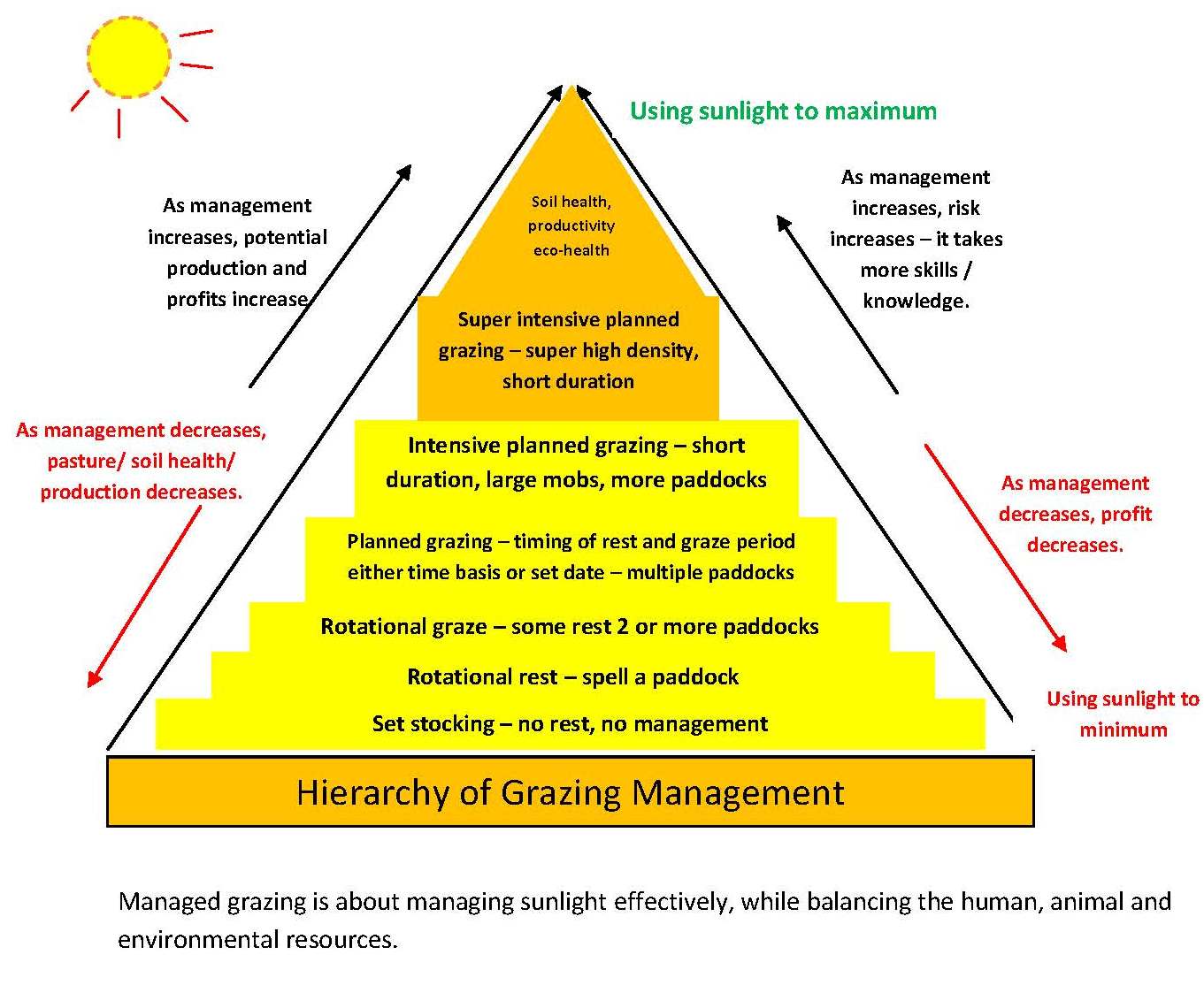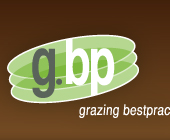Grazing Land Management (GLM)
Pasture based grazing systems in Australia are being seriously affected by climate variability. The way forward is to adapt to meet the changing situation, work with nature, and create tools and best practice strategies to maximize production opportunities. The challenge producers face is threefold in that they must be able to become increasingly efficient while
- Maximizing carbon sequestration and photosynthesis,
- Minimizing greenhouse gas emissions and
- Able to manage the variable climatic conditions.
BMP Grazing or best practices are the most important actions that any land manager can undertake to aid in minimising risk of drought and maximising opportunities during good seasons (climate variability management). These practices are extremely important when it comes to managing the animal on and off the pasture. This movement is called grazing management, because the land owner is actually managing how much grazing occurs and how much time is allowed for recovery of the grazed plants. The grass is not able to stop the animal from constantly returning to the same place to re-graze and so the land manager is in charge. Grazing management has been discussed for decades and argued at great lengths by researchers and farmers from every belief system. However, the practicing graziers are already innovators and don't need a scientist to tell them what works and what doesn't in the field. Simply placing 50 cows in a paddock and leaving them in the same paddock for 9 months or so until calving is about as unmanaged as you can possibly get. Although this management style is accepted by some pasture specialists today, it is not very advantageous for the animal, the pasture, the soil or the hip pocket (and it is very unscientific). The only advantage is the land owner does not need to think too much.
Grazing Management impacts on vegetation and soil
RESEARCH - Methane Emissions (CH4)
BMP Research from 2003 demonstrated that cattle being rotationally grazed (managed intensive grazing or MIG) emitted 22% less methane (CH4) than did continuous grazed animals. Digestion of pasture (cellulose) and starches in the rumen of cattle produces methane (CH4). Methane plays a role in increasing global warming.
There are some very significant differences between paddocks that have no rest (set stocked) and paddocks that are rested for even 50% of the year. That is plants with rest will rebuild healthy root systems and bigger solar panels to handle the coming season. Photosynthesis is the most important single chemical and biological reaction in the world and it is up to graziers to manage this reaction. By grazing too heavily (reducing the solar panels) or re-grazing too soon (before the solar panels have regrown), the plant can be damaged to the degree that it may not recover and it will certainly have a reduced yield.
Read more research on methane emissions.
RESEARCH - Ecosystem health, vegetation, soil health and profitability.
BMP Research from 2010 demonstrated cattle being grazed in a multi-paddock (rotation) system, improved soil health, vegetation health, ecosystem function and farm profitability. A long term study into Grazing BMP by Texas based, Agri-Life Research Scientists has verified the importance of rotational grazing for improving ecosystem health. Texas AgriLife Research scientists agree that multi-paddock grazing improves vegetation, soil health and animal production relative to continuous grazing in large-scale ranches. The study measured the impacts on vegetation and soils achieved by commercial ranchers who adapted management practices in response to changing circumstances to achieve desirable outcomes. At the property/ ranch scale, when multi-paddock grazing is managed to give best vegetation and animal performance, it is superior to continuous grazing in relation to conservation and restoration of resources, provision of ecosystem goods and services, and ranch profitability. However, this study differed from those conducted by researchers who investigated multi-paddock grazing in relatively small experimental areas, without managing adaptively the way a successful, conservation-oriented commercial rancher would.
Effective Grazing Management
For too long the old science has been used to dictate the stocking rate of a parcel of land. The long term carrying capacity has been developed as a base from the number of stock that can be carried in the worst season. That is the number of AE's or LSU's the land will safely carry during droughts. However, this is the bare minimum of animals and not the maximum as many professionals attempt to get bureaucrats to believe.
The real capacity varies from year to year, season to season and month to month and especially depending on development and grazing system being utilised.
To graze a plant effectively, there are a number of key parameters that need to be considered.
- Condition of the pasture (phase 1, 2 or 3)
- Condition of the soil ( ABCD condition score) (land Condition - what impact does the ground need?)
- Impact from grazing - How long has it been grazed? How short is it? Is there a green factory to regrow?
- Rest required for regrowth so that it is able to be re-grazed ie (30 days - 180 days)
THE HIERARCHY OF GRAZING

The hierarchy of grazing management is a visual indicator showing the various levels of management complexity, risks and benefits associated with improved grazing systems. The higher up the pyramid, the more risk and the greater the benefits associated with implementing the change. The enormous benefits of managed grazing far outweigh the risks involved in a simple planned grazing system.
Workload in a grazing business is relative to the number of individual mobs in individual paddocks that need checking on during the season. If a paddock is set stocked, it may often be more physical work constantly checking on water supply than if a mob is being moved between 4 paddocks or more.
The most important tools for managing grazing are:
- Knowledge and commitment
- Your grazing plan (flexibility)
- Timing of graze (before the rain, after the rain, during the growing season)
- Length of graze (duration)
- Length of rest to match recovery period
- Impact (hoof action) from stock (stock need to impact every square metre of a paddock)
- The bite (grass requires grazing to respond and extend the growing season)
- Herd effect (Density - # head/ ha)
- Bogging of hard pans in wet weather where necessary
- Have fun and learn from your actions
Effective grazing management is based on the matching of the number of mouths (Stocking rate) with the available feed supply (Carrying Capacity). This is commonly known as matching SR to CC and is really confusing for many graziers when we challenge the long held carrying capacity models that say 1 beast to 4 ha, as an example. From season to season and year to year and even week to week, the carrying capacity will change. That is the amount of feed on the ground can change with one good fall of rain in early summer. The long term carrying capacities are only a guide and it is the grazing manager's job to have a plan in place at all times as to how to maximise the production from any change in the season. Graziers should all have a plan to agist or purchase stock to fill feed surpluses and to destock when feed reserves run low. This and many other topics are covered in the Grazing BMP training courses with GBP Qld.
For more information on other topics, call 0438 395 255



